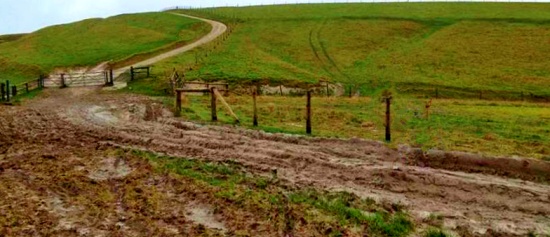
Charlie Cain, the National Trust’s Head Warden for the South Downs, writes:
The situation is not ideal and it is our intention to remove the cattle as soon as we can. The grass growth this year has been exceptional due to the long summer and we need to keep it under control. The grazing of cattle is the most effective natural way of doing this. The excessive rainfall this autumn has made the situation worse. The grass is still growing and the cattle are causing more damage because the ground is so soft.
I am regularly monitoring the condition of the paths. We intend to replace the cattle with sheep for the winter but at the moment sheep would not consume enough grass. I am unable to predict exactly when this will happen. It will depend on how much the grass continues to grow.
As regards fencing, we have let some of the fences fall into disrepair lately. This is because a larger area is more-efficiently grazed by cattle. When a fence is situated up and down the hill you tend to get more ungrazed areas because you change the grazing pattern of the animals. Our plans for next year however include splitting the Fulking hillside into three paddocks. This may make it easier to control damage to paths because we will be able to move cattle away from the worst-affected areas.
